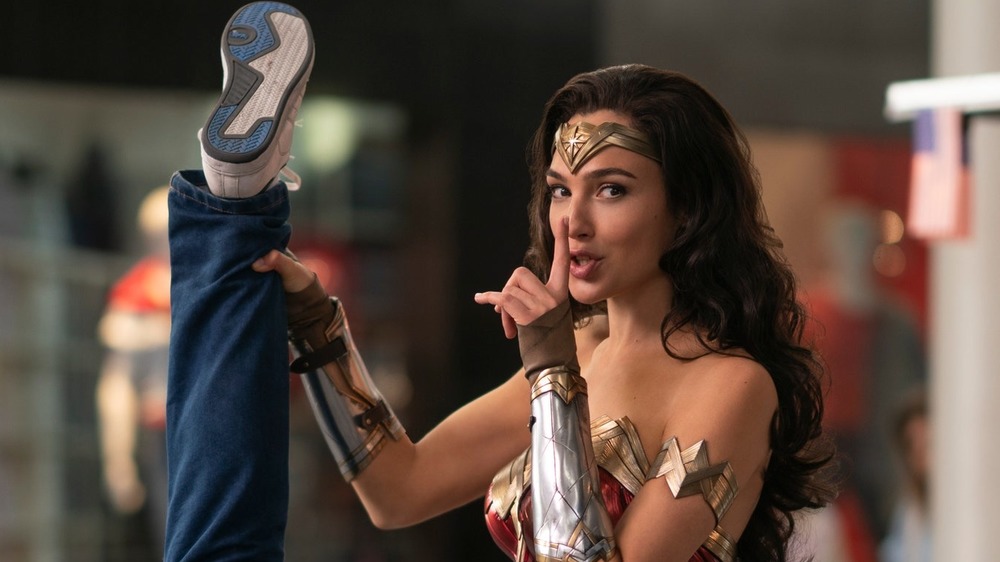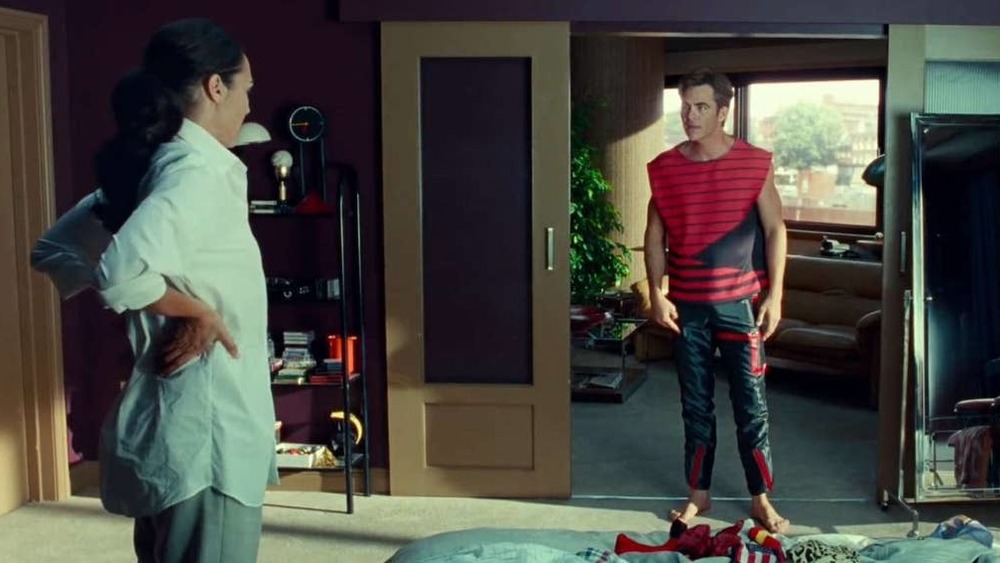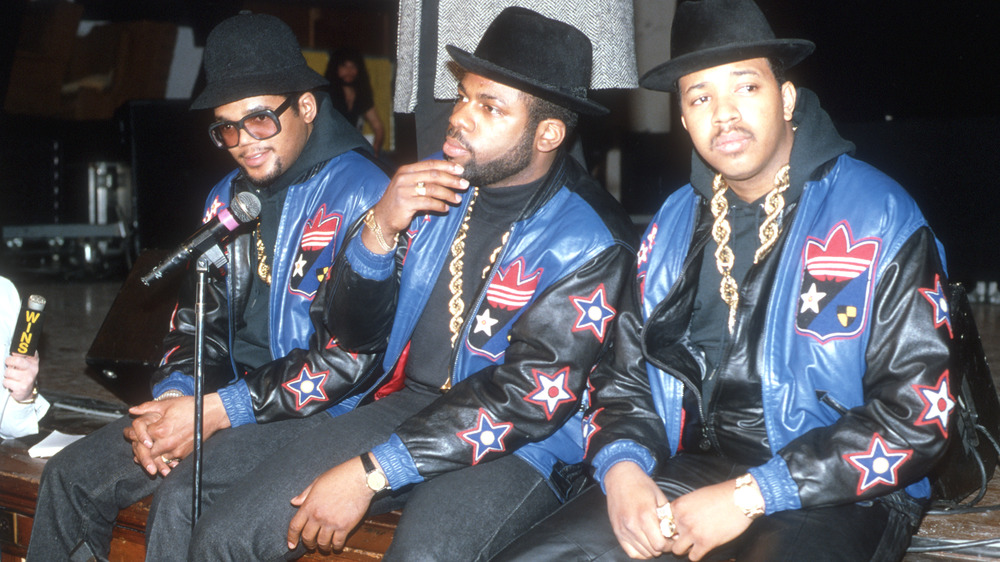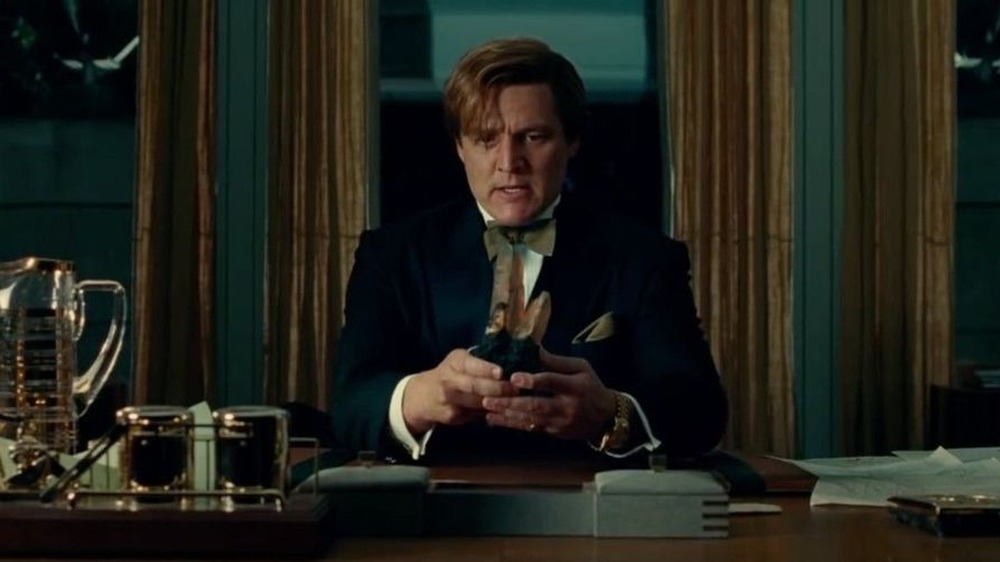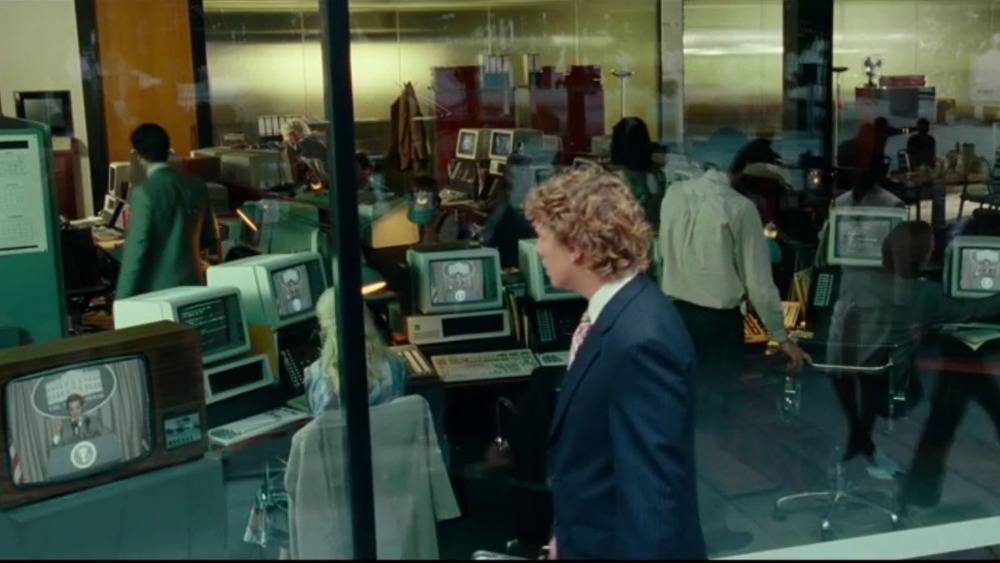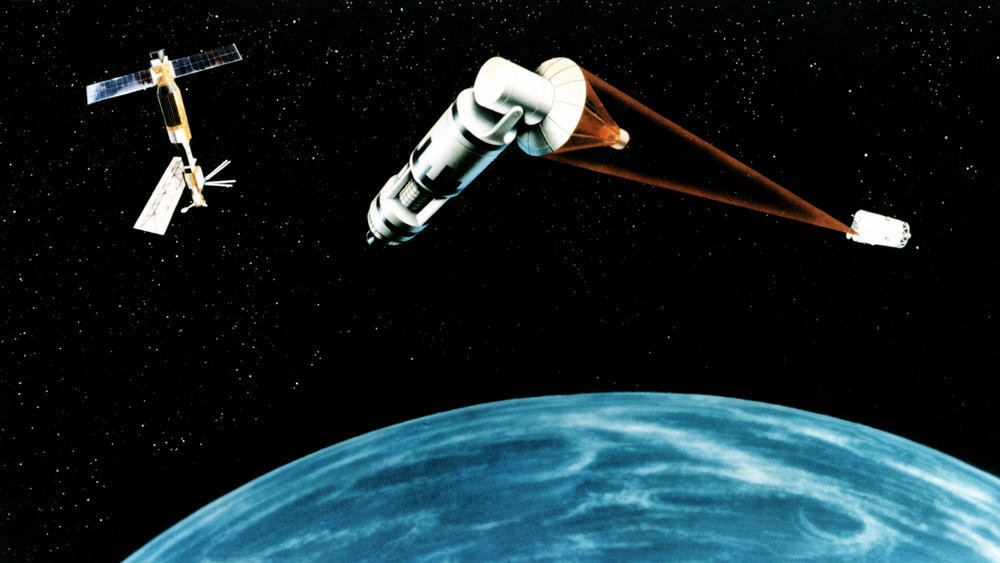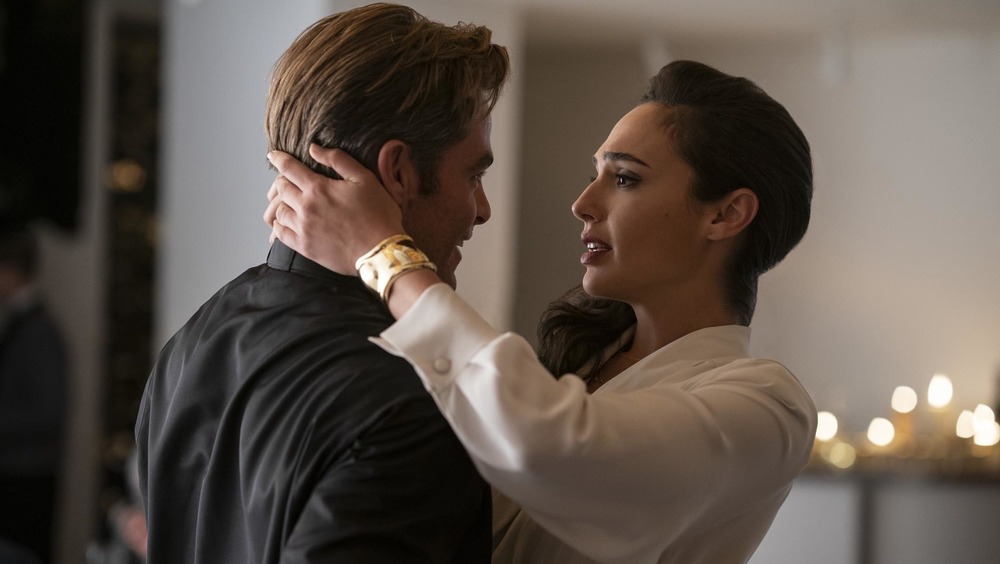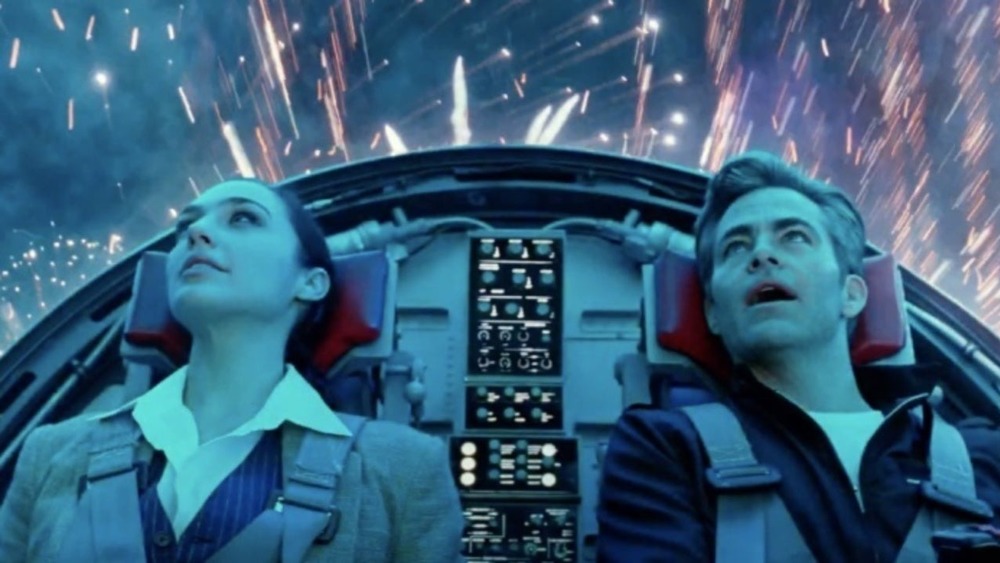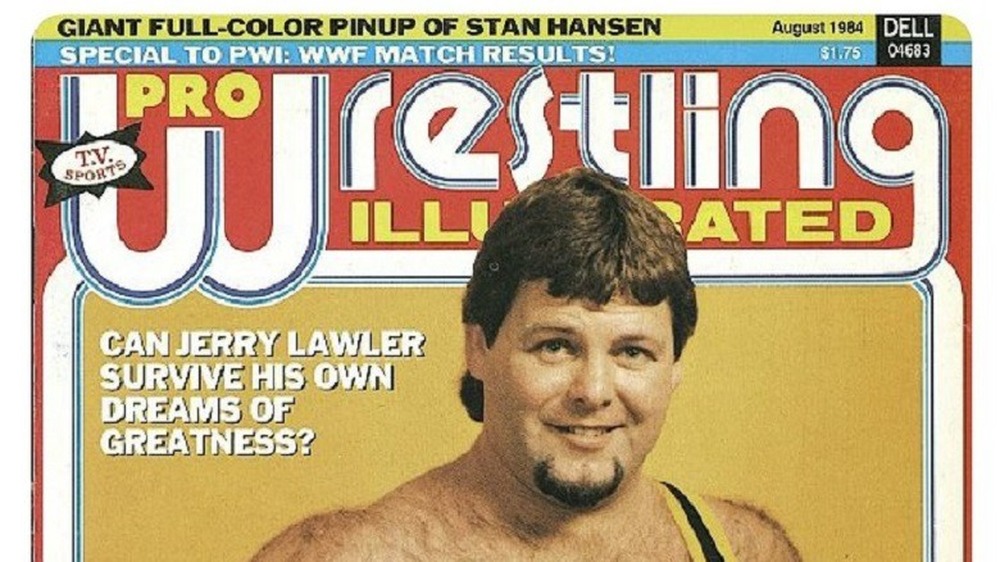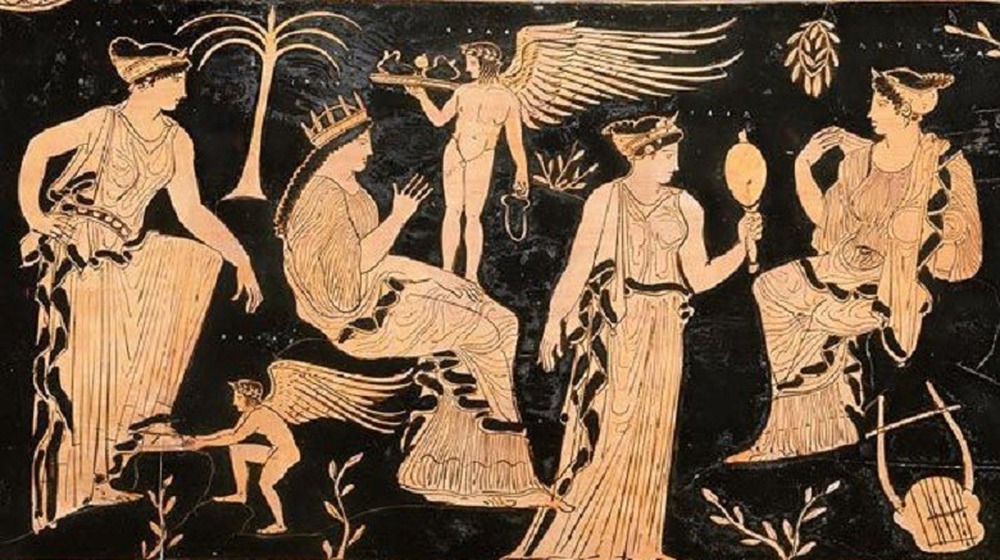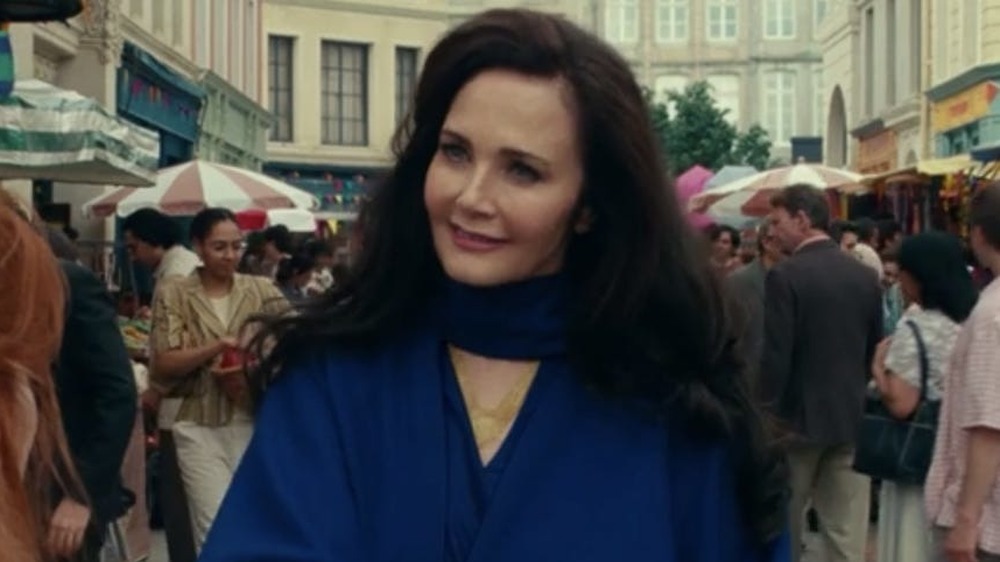Things Only Adults Notice In Wonder Woman 1984
After much anticipation, Wonder Woman 1984 flew into theaters on Christmas Day, giving audiences a lovely gift to tie up the end of 2020. In light of the COVID-19 pandemic and its era of stay-at-home entertainment, Warner Bros. made history by choosing to simultaneously air the film on HBO Max and in theaters — along with all other planned releases for 2021. Serving as the sequel to Patty Jenkins' first Wonder Woman film and the ninth installment in the DCEU, Wonder Woman 1984 is an amusing roller-coaster ride the whole family can enjoy. Gal Gadot and Chris Pine shine in their returning roles, and Kristen Wiig excels as Barbara Minerva, who becomes the villainous Cheetah.
Wonder Woman 1984 isn't afraid to get cartoonish, and even a little juvenile. It begins with a fight scene featuring a giant teddy bear, pastel mall decor, and Diana giving a hammy wink to a young girl watching the battle, after all. But there are other aspects of this film kids are bound to miss, including real-life references to Greek mythology, pro wrestling, and actual government defense programs. Then, there's the incredibly questionable and deeply creepy manipulation of someone else's body for selfish romantic interests. From the film's most obscure references to its uncomfortable moments, these are all the things only adults notice in Wonder Woman 1984.
Totally '80s
As the title implies, Wonder Woman 1984 picks up with Diana of Themyscira in the midst of one of filmmaking's favorite decades to portray: The 1980s. There's a lot to love about the '80s, from the decade's awesome music to its gleaming video stores. Although the era is often exaggerated by Hollywood, those who lived through the 1980s will recognize many real details from that time scattered throughout the set of Wonder Woman 1984.
Sparked by the public's obsession with fitness and the success of movies like Flashdance, people everywhere donned spandex and leg warmers to break a sweat. In its earliest shots of people on the streets of DC, Wonder Woman 1984 offers a number of examples of this look. Speaking of fashion, MTV-fueled youth teased out their hair to gargantuan levels of volume and rocked styles inspired by Duran Duran, Michael Jackson, Madonna, and MC Hammer — complete with those ridiculously over-the-top parachute pants and a whole lot of metallic fabric. Steve Trevor shows off a few of these looks when he and Diana attempt to find him an era-appropriate look.
Even the crosswalk signs in Wonder Woman 1984 are accurate to the time period. Before today's modern LEDs were installed in the early 2000's, the signage did indeed display the words "Walk/Don't Walk," rather than the current symbols representing a person in mid-stride.
The rise of hip-hop
The '80s gave birth to many forms of new music, including glam rock, new wave, and synth-pop. Many of the hits from this time continue to be popular favorites. Seriously, nothing gets the nostalgia juices flowing like UB40, Blondie, or Van Halen on a film's soundtrack. Surprisingly, Wonder Woman 1984 is only occasionally peppered with iconic hits, choosing instead to rely on the skilled composition of Hans Zimmer. Nevertheless, the film does acknowledge the dawn of hip-hop. The genre, which began in the 1970s, emerged from the New York underground in a major way in January 1980, when the Sugarhill Gang's "Rapper's Delight" became the first hip-hop single to reach the Billboard Top 40.
The genre became an international sensation in 1986 when Run DMC collaborated with Aerosmith on a cover of the rock band's 1975 smash hit, "Walk This Way." It peaked at number four on the Billboard Hot 100. Rap music comprises just one piece of the hip-hop puzzle — it represents an entire culture, comprising turntablism, breakdancing, graffiti art, and emceeing. '80s films like Wild Style, Breakin', and Style Wars brought these elements of hip-hop from NYC into neighborhoods across the country.
Wonder Woman 1984 alludes to this not-so-quiet revolution with its various background b-boys and b-girls, breakdancing on cardboard-covered corners and decked head-to-toe in Adidas and Tribal Gear. Though hip-hop has gone global, the core of the culture remains the sort of talented individuals Diana and Steve marvel at in this film.
Desperate times
Adults can't help but roll their eyes when one of Max Lord's last business investors, Simon Stagg, threatens to report him to the Federal Trade Commission if Max doesn't return his investment money within 48 hours. This sort of "race against the clock" trope is favored by film and television producers, because it provides a sense of urgency to the plot without being too restrictive. The 48-hour timeline is a particularly popular choice for on-screen narratives, as it provides opportunities for a variety of shots at various times throughout the day and night, while still retaining an economy of storytelling.
Just how popular is this trope? Enough that a movie from the 1980s was making fun of it nearly 40 years before Max Lord faced it in Wonder Woman 1984. The 1982 action-comedy movie 48 Hrs., starring Nick Nolte and Eddie Murphy, literally calls itself out for using this cliche in its very title. We can't blame filmmakers for relying on this reliable plot point, but it does get repetitive. Countless plotlines rely upon characters struggling with unreasonable timeframes to accomplish impossible tasks. As the years have gone by, the conceit has grown extremely stale with overuse. Younger viewers may find Max Lord's conflict in WW84 engaging, but more mature audiences are likely to find it predictable and anticlimactic.
A huge, tiny mistake
Wonder Woman 1984 gets a whole lot right about the 1980s, but there is something it gets majorly wrong. This egregious error can be spotted by sharp eyes at the beginning of Max Lord's big finale speech. After successfully taking over the world's broadcasting signals using secret government tech, Lord is able to splash his face across the screens of unwitting bystanders everywhere. No matter where Diana turns, his face is visible, urging the people of the world to wish for what they want and see their wildest dreams come true.
The only problem with this super-villainous scheme is that those screens broadcasting Lord's face include television and computer displays. This scene takes place decades before the internet or streaming services became publicly available. In fact, the concept of a home computer was considered incredibly novel and exotic at the time, as Apple had just started selling their first generation of Macintosh computers that January. This sort of all-encompassing broadcast wasn't just impossible at the time — it was basically unthinkable.
That this blooper wasn't caught by the production team prior to release just goes to show how easy it is to take technology for granted — and how much older those who were walking around during the 1980s are getting. What's that sonny? Speak up, it's hard to hear you with our eardrums blown out by 1980s punk rock and techno!
The Star Wars program
The technology Max Lord uses to take over the planet's airwaves in Wonder Woman 1984 may be the stuff of science fiction, but the parent program mentioned in the movie as its comparison was actually entirely real.
The 1980s marked the height of the Cold War, when the United States and the Soviet Union were vehemently attempting to one-up each other while maintaining a public pretense of peace. Secret government programs proliferated during this era, one of which was known as the Strategic Defense Initiative (SDI), a missile defense system proposed by Ronald Reagan in 1983 as an attempt to render nuclear weapons obsolete. He feared the then-current stockpile of nukes, held by major world powers under the concept of "mutually assured destruction," was a poorly constructed suicide pact ready to come apart at the seams. Nicknamed the "Star Wars program," the SDI proposed to utilize state-of-the-art technology and weapons like lasers, particle beams, satellites, and ground and space-based missile systems to neutralize incoming threats, like nuclear missiles.
From the start, the program was heavily debated. It was deemed inconceivable and expensive by its critics, in addition to potentially provoking an arms race. It was officially scrapped in 1993, in a world without the Soviet Union it intended to intimidate. We can't help but wonder if perhaps Admiral Ackbar could have led the program successfully.
Barbara, let down your hair
Kristen Wiig does an excellent job portraying the painfully shy and awkward Barbara Minerva, who transforms from an introverted wallflower into the empowered apex predator known as Cheetah. However, Barbara's character might seem remarkably familiar to older audience members who have seen more movies than their younger cohorts. This is because Barbara's story revolves on the axis of a heavily played-out trope — the one where the disregarded nerdy girl gets a makeover, and suddenly transforms into a popular hottie.
Examples of this hoary old cliche include Eliza Doolittle in My Fair Lady, Sandy Olsson in Grease, Mia Thermopolis in The Princess Diaries, and Laney Boggs in She's All That. Indeed, this plot point has been seen countless times before, and its use tends to marginalize the character in question far more than it empowers them. To put it plainly, no one is surprised to see the ugly duckling become the swan any longer — especially because the duckling is pretty much always already attractive.
To seasoned viewers, Barbara's transformation feels inevitable in Wonder Woman 1984, and it's hard to be surprised when she all-too-predictably removes her glasses and shakes out her hair. Cheetah's desperate need for attention might be enough to fuel her into standing opposite one of the most powerful heroes in the DCEU, but few over the age of 18 are surprised to see it play out.
Invasion of the body snatchers
In Wonder Woman 1984, Diana unwittingly uses the coveted Dreamstone to bring her lost love Steve Trevor back from the dead — but he doesn't return in the way you'd expect. Rather than magically resurrecting his body, the Dreamstone inserts Steve Trevor's consciousness into the body of another man living near Diana in Washington, DC. To minimize audience confusion, the "Handsome Man," as he's credited, is shown briefly at the start of his possession, then his likeness switches to Steve Trevor's.
It's possible this was intended as some sort of metaphor about only having eyes for your true love. This is something younger audiences might be able to buy into a little more easily. But this magical body-snatching comes off as more problematic than romantic for adults. Steve Trevor doesn't know who Handsome Man is, and disrupts his entire life with his presence. What happens to his job, his social life, and all other aspects of his existence when he suddenly becomes Steve? Wouldn't loved ones and colleagues become worried when Handsome Man suddenly stopped coming to work or returning their phone calls? Wouldn't the poor man be terrified when suddenly coming to, after Steve Trevor forfeits his parasitic existence? Also, one can't help but wonder what the implications are of being intimate with someone's body when they have no presence of mind to provide consent. At the very least, it's unnerving — at the worst, it's something far more sinister.
Inconsistent and unrealistic science
Wonder Woman 1984 is loaded with highly unrealistic depictions of physics and technology that are hard to ignore, especially for a jaded adult. When Steve insists on flying a modern plane, he does so without issue, despite the massive differences between planes he flew during World War I and the modern jet he and Diana commandeer. Moreover, when Diana manages to make the jet magically invisible, it also simultaneously disappears from radar — but just because an object becomes invisible to the naked eye doesn't mean it also becomes invisible to radar.
Furthermore, when experiencing the G-forces and thin oxygen endured while flying at high altitudes, it's impossible to properly breathe without oxygen and specialized diaphragm training. But Diana and Steve chat away unassisted, as though they're toddling down the highway, rather than speeding through the air thousands of feet up at hundreds of miles an hour.
Likewise, the final battle between Wonder Woman and Cheetah defies the rules of electricity to the point of silliness. The two women are impervious to thousands of volts of electricity in ways that can only weakly be explained with comic book logic. Then, suddenly, those lame excuses stop mattering at all when the live wire Cheetah swings from without any apparent trouble contacts the water she's immersed in, and becomes the source of her demise. Just what are the rules of physics, electricity, and technology in this film?
All hail the King
Professional wrestling is beloved by people of all ages. But younger fans likely miss the real-life 'rasslin reference planted in the midst of Wonder Woman 1984. While visiting the home of Babajide, a man with important information regarding the Dreamstone, Diana examines a magazine lying near his front door. It's the August 1984 issue of Pro-Wrestling Illustrated, featuring Jerry "the King" Lawler on the front cover. As it turns out, this particular issue really does exist, and it really was in print at the time.
This was excitedly pointed out by Lawler himself on Twitter, after Stuart Schreck of DC Comics brought it to his attention. It might seem random to feature a pro-wrestling themed magazine in Wonder Woman 1984, but at the time, sports entertainment had reached a pinnacle of unparalleled popularity. The 1980s were a huge decade for professional wrestling in particular, to the point that it is often referred to as the sport's "Golden Age." As a result, wrestlers like Jerry Lawler, Hulk Hogan, and Andre the Giant became household names, and subscriptions to magazines like PWI grew. Offering a nod to this aspect of the decade is something many grown-up viewers of Wonder Woman 1984 appreciate.
Daughter of Titans
In the DCEU, Asteria is a celebrated champion of the Amazons who selflessly sacrificed herself in battle so the rest of her sisters could flee to the safety of what would become Themyscira. This fallen hero is remembered as the "Golden Warrior" for her courageous heart and legendary armor. To honor Asteria, a golden statue of her likeness was erected in Themyscira's coliseum. The Amazonian athletic competition shown in the beginning of the film is also held as a way to remember and reflect upon Asteria's legacy.
In real life, Asteria was a name given to several prominent figures in Greek mythology meaning "starry one." The most well-known Asteria was a daughter of the Titans Coeus (Roman name Polus) and Phoebe. She was also mother of Hecate, the goddess of witchcraft.
Interestingly, this particular strand of mythology portrays Asteria as eventually transforming into an island to escape Zeus' advances. Adult viewers will pick up on how reminiscent this is of her origin story regarding the island of Themyscira, and how it echoes the Amazons' desire to separate themselves from the world of men. Culture and technology may have changed, but tales of heroes and villains remain timeless.
The original Wonder Woman returns
Considering she fell in battle and was never heard from again, the Amazons naturally assumed that Asteria died defending them. This assumption was reinforced when Diana went on a mission to find the fallen warrior and was only able to track down Asteria's Golden Eagle armor, which she winds up using in her final face-off against Cheetah and Max Lord.
However, Wonder Woman 1984's mid-credits scene reveals that Asteria is very much alive, secretly living among normal humans and saving the occasional baby when the opportunity presents itself. Although younger viewers may not recognize the stunning brunette playing Asteria in this scene, adults undoubtedly will: She's the one and only Lynda Carter.
Carter made a name for herself playing Diana Prince on the classic Wonder Woman television series, which originally aired on ABC and CBS from 1975 to 1979. Despite the fact that she's been portraying Amazon warriors for quite some time, Carter still manages to dazzle just as she did in the '70s. It will be interesting to see what DC has planned for the iconic actress: Hopefully, there's more to come beyond this brief, if thrilling, appearance.
